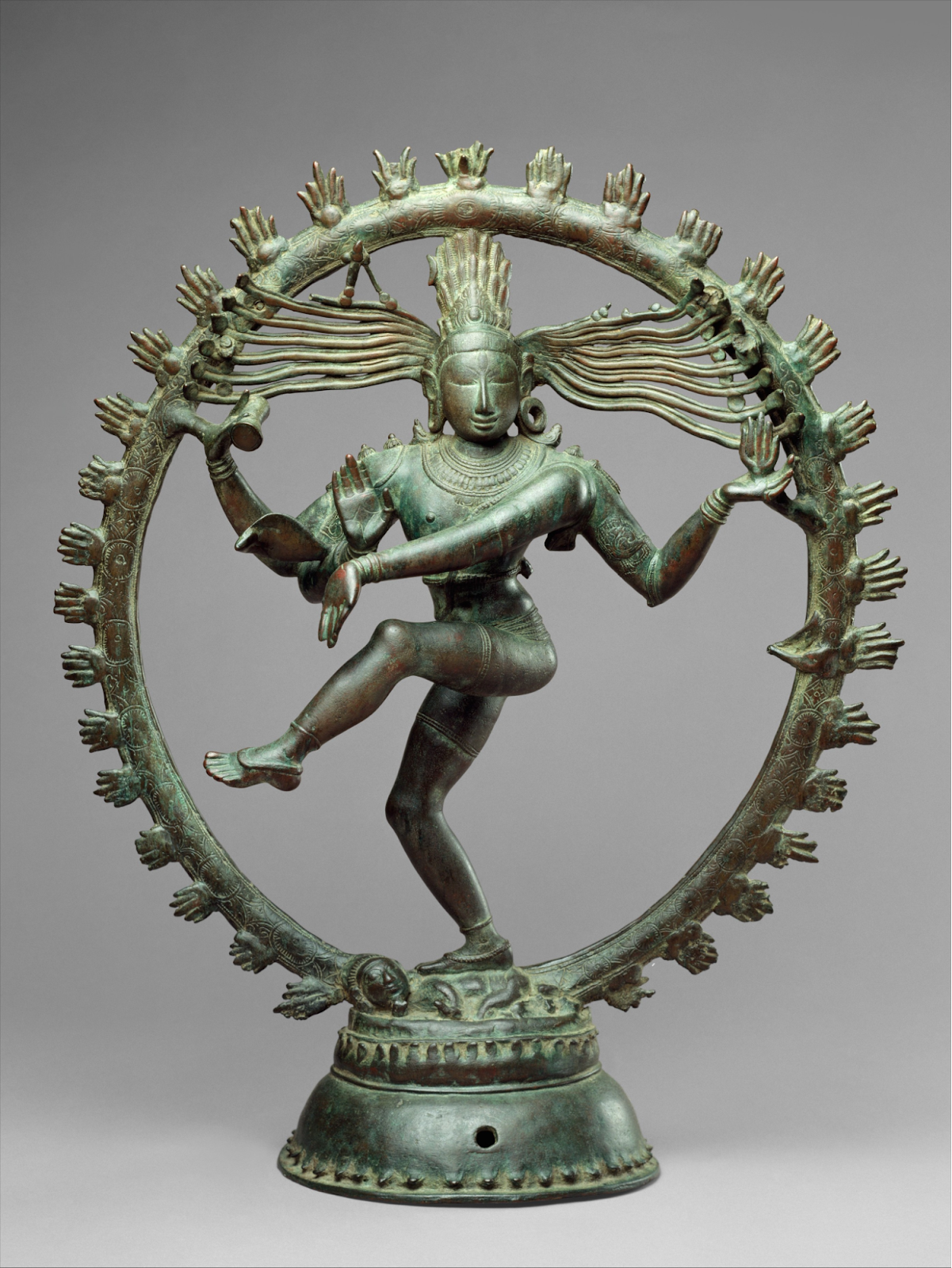Lord Nataraja | 16 Dec 2022
Why in News?
Recently, the Tamil Nadu police successfully stopped the scheduled auctioning of a bronze idol of Nataraja by France.
- The rare variety bronze idol was suspected to have been stolen from Kayathar in Thoothukudi district half a century ago.
What are the Key Facts about Lord Nataraja?
- Nataraja (Lord of the Dance), the Hindu god Shiva in his form as the cosmic dancer, is represented in metal or stone in many Shaivite temples, particularly in South India.
- It is an important piece of Chola sculpture.
- The upper right hand holds the damru (drum), which signifies the sound of creation. All creations spring from the great sound of the damru.
- The upper left-hand holds the eternal fire, which represents the destruction. Destruction is the precursor and inevitable counterpart of creation.
- The lower right hand is raised in the gesture of Abhay mudra signifying benediction and reassuring the devotee to not be afraid.
- The lower left-hand points towards the upraised foot and indicates the path of salvation.
- Shiva is dancing on the figure of a small dwarf. The dwarf symbolises ignorance and the ego of an individual.
- Shiva is shown as the source of all movement within the cosmos and as the god whose doomsday dance, represented by the arch of flames, accompanies the dissolution of the universe at the end of an eon.
- The matted and flowing locks of Shiva represent the flow of river Ganges.
- In ornamentation, one ear of Shiva has a male earring while the other has a female. This represents the fusion of male and female and is often referred to as Ardhanarishwar.
- A snake is twisted around the arm of Shiva. The snake symbolises the kundalini power, which resides in the human spine in the dormant stage. If aroused, one can attain true consciousness.
- The Nataraja is surrounded by a nimbus of glowing lights which symbolises the vast unending cycles of time.

